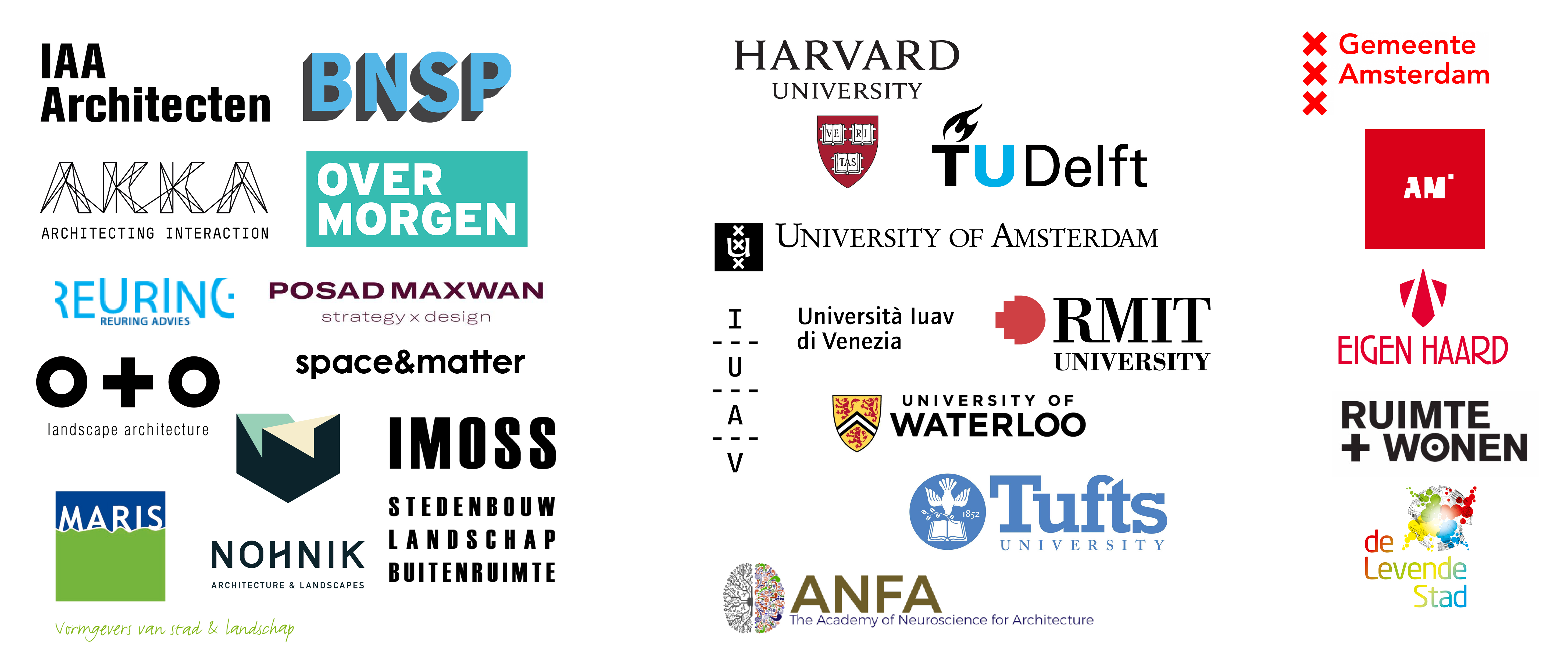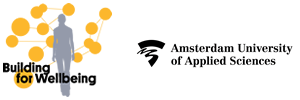Sensing Streetscapes
Co-researching emerging technologies such as AI and eye-tracking technology for enhancing urban design.
New technologies from neuroscience and artificial intelligence offer the opportunity to measure and visualize the assumed effects of spatial design solutions of streetscapes on its users.
Amsterdam fases an extreme densification, challenging its liveability
A key question is how to design high density and high rise neighbourhoods – and still create a human scaled streetscape at eye‑level
Amsterdam is challenged to accommodate 50,000 to 90,000 new homes in the next five to ten years. That is equivalent to 10% to 20% of the city’s current total housing stock. Moreover, the new homes have to be built within the existing urban fabric, calling for high densities and the construction of new ‘un-Dutch’ typologies of extreme high-rise housing. Similar accelerating densification is taking place in multiple Western cities, driven by demographic and economic growth, yet also creating major impact on the liveability of cities.
The impact on the (visual) experience of the built environment in streetscapes at eye-level remains unpredictable. This calls for a deeper understanding of the relationship between current dominant design solutions and the conditions they ought to provide for the users of streetscapes. New technologies from neuroscience and artificial intelligence offer new opportunities.
Explorative research
on spatial design solutions for high density environments
The emergence of a new generation of technology and methods borrowed from the field of neuroscience, specifically eye-tracking, open up the possibility of gaining a deeper understanding of physical-social interrelationships in streetscapes. To provide more accurate practice proven and tested design solutions, we conduct a two year explorative research on design principles for liveable streetscapes.
Together with the Chairs of Urban Analytics and Play & Civic Media, a consortium of urban designers and city planners, we trace, analyze and unlock spatial design solutions for new streetscapes in high density settings. An international advisory board and a representation of Amsterdam Clients of Spatial projects complete our consortium.
The goals of our research are threefold. It aims to produce more practice proven knowledge about possible design solutions, creating better neighborhoods; transfer and translate the applied emerging technologies into the practice of spatial design; and contribute to the new fields of neuro-architecture and Artificial Intelligence.
Workpackages and endproducts
Technical research
Eye tracker
Artificial intelligence
Tools for design praxis
Best practices
Catalog and
typology
Best practice book
Lab and field tests
Eye tracker
triangulation
Designing for human
scaled streetscapes
Consortium

Knowledge Quest: Submit Your Example of a Great High Density Environment
Do you know a great example of high density living environments built within the last 30 years? Share your knowledge and contribute to the creation of an open repository via Crowd Creation. To be truly exemplary, the area should include a mixture of functions (at least some of them high-rise) where the physical fabric retains a human scale at street level despite the high density.
Requirements:
- Residential environment in an inner city area
- Built within the last 30 years – or about to be ‘opened’ soon
- Built for High Density with some high-rise buildings
- Success in creating a human scale at eye-level on the street
- Some level of mixed functions, green design, etc. – anything that increases the livability of the environment.
Contact us
Amsterdam University of Applied Science
Faculty of Technology
Research programme Urban Technology
dr. Frank Suurenbroek, Professor of Spatial Urban Transformation
dr. Gideon Spanjar, Senior Project Leader - Researcher
Address
Visiting address:
Weesperzijde 190, Amsterdam
Please send your mail to:
PO Box 1209, 1000 BE Amsterdam
The Netherlands
